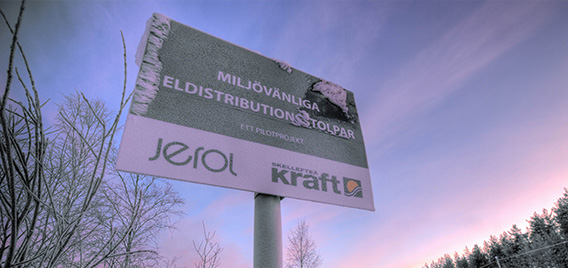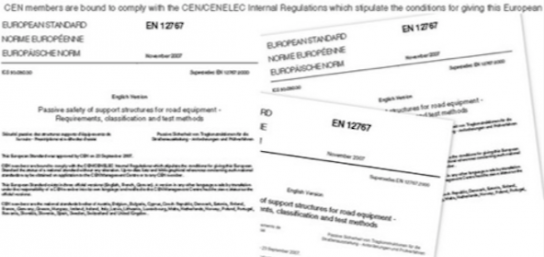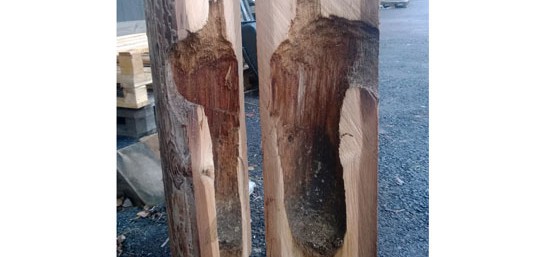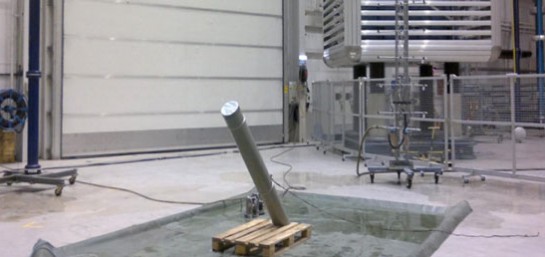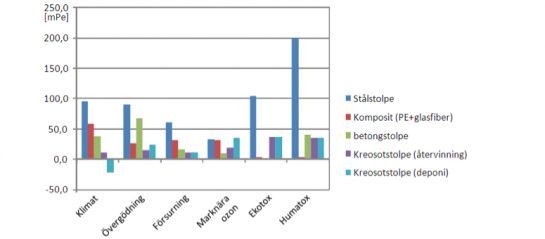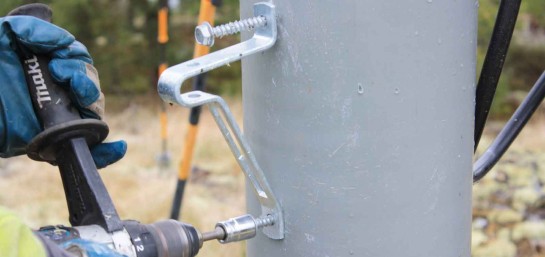
Environmental
Jerol poles are environmentally friendly, do not leach into or from the soil, and are not affected by ants, other insects or dogs.
Jerol poles are therefore suitable for installation in environmentally sensitive areas such as water reservoirs, parks, recreational areas including playgrounds and schools, as well as nature reserves and protected areas.
- Can Jerol poles be used in environmentally sensitive areas?
Jerol composite poles are environmentally friendly and neither absorb nor leak chemicals over their whole lifespan. Environmental declaration (Swedish) - What goes into a Jerol composite pole?
Jerol composite poles consist of fibreglass reinforced polyester, with a protective outer layer of durable polyethylene. Material Safety Data Sheet (Swedish)
Environmental Toxins and Sweden’s Environment Goals: “A toxin-free environment”
As a result of the legislative changes undertaken across the European Union, where the discussion of dangerous chemicals and a toxin free environment is high on the agenda, Jerol’s non-toxic poles are an excellent alternative.
In Sweden, 4952 tonnes of creosote was used in 2014. This has increased by 15-20% each year in the 2 years following. Creosote accounts for approximately 50% of the total pesticide volume in Sweden, and has been exempt from pesticide tax since 1984.
Additionally, tens of thousands of creosote-impregnated posts are imported from Norway and Finland.
The EU’s chemical legislation REACH alongside Sweden’s environmental policy, says that creosote shall not be used if a non-toxic alternative exists. This is particularly relevant within protected areas and where there is the likelihood of repeated contact with skin.
Creosote is a CMR substance, i.e. carcinogenic, mutagenic, or a reprotoxic (harmful to a foetus or embryo during pregnancy). It contains several substances with hazardous PBT (persistent, bioaccumulative and toxic) characteristics.
Creosote can also irritate the skin and together with sunlight can cause severe allergic reactions.
It is bioaccumulative and very toxic to aquatic plants and wildlife. Creosote is used as a protective agent in wooden electrical and telecommunication poles, and a large pole can contain over 190kg of creosote.
Working Conditions
Our products are beneficial to both society and the individual. A sustainable and long-term approach is necessary, and the working environment for those coming into contact with the poles is always a priority when developing our products. Traditional wooden poles are impregnated with carcinogenic creosote, whereas all of our products are clean, environmentally friendly, and safe to climb with standard equipment.
Läs mer >>Quality Assurance
We have an extensive quality assurance system embedded in our production process. This system stores information on every pole produced, including a unique pole ID. All input materials can then be tracked and identified. Those products used in traffic safety have high standards of quality assurance which are followed throughout the production process in the factory.
Quality assurance is certified by SP Technical Research Institute of Sweden and follows the European standard EN-40 for road safety products.
Läs mer >>Security
There is an assurance in knowing that Jerol poles do not rot, are non-toxic and odourless. They are safe to work with, can be used in environmentally sensitive areas and water reservoirs and are impervious to woodpeckers. They do not affect the environment, nor are they affected by it.
Our poles provide security for fitters working with and climbing them, residents, as well as energy companies and businesses using them.
As they are non-conductive, they provide another level of safety when working with live current.
The picture shows a woodpecker hole in cross section.
Läs mer >>Safety
Jerol poles are non-conductive and tested at STRIs accredited high voltage institute in Ludvika. The tests performed in STRIs laboratory at voltage levels up to 425KV with very good results.
PDF of the test results
Pg.1 Summary of report (Swedish)
Pg.2-25 Complete report (English)
Reference: www.stri.se
Läs mer >>Life Cycle Assessment (LCA)
A life cycle assessment shows and deals with the load on the product in the environment over the course of its lifetime. IVL Svenska Miljöinstitutet have conducted a study to compare the environmental impact of poles of different materials.
The comparison shows that over time, composite poles are the safest choice for the environment, both today and tomorrow. Click here to read a report from IVL (ivl.se). The graph shows the environmental impact (mPe) for each category over a period of 50 years.
Läs mer >>
